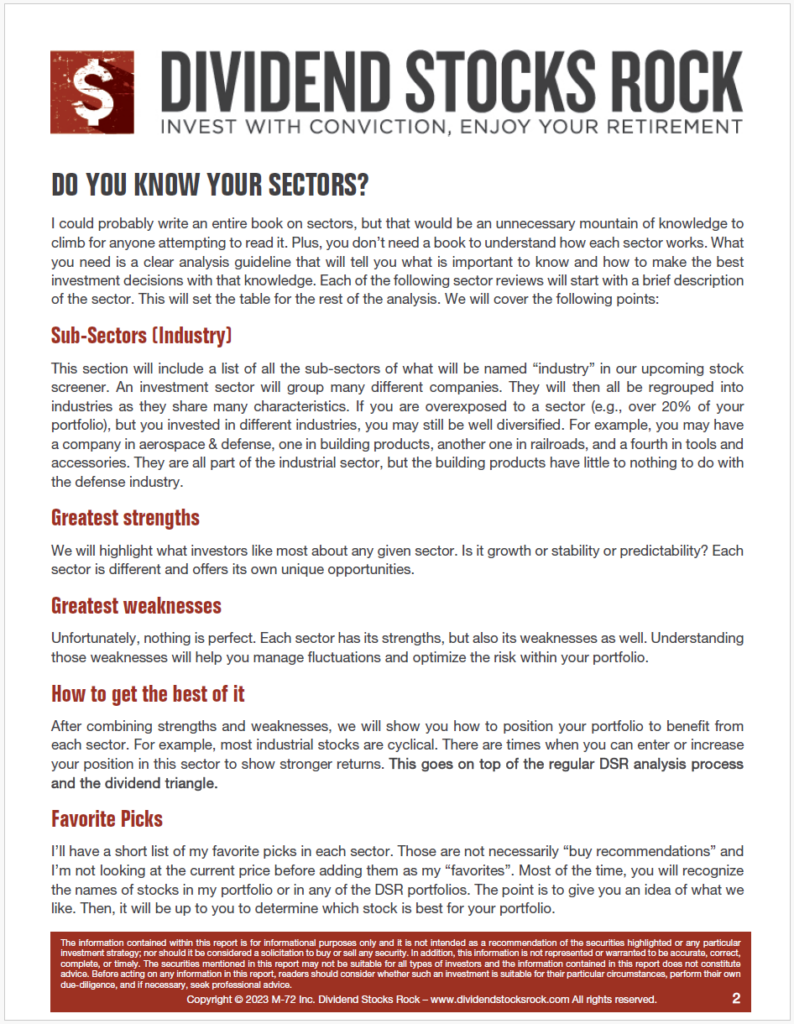Subscribe
How do industries help investors diversify their portfolios? What are the main strengths and weaknesses of the Consumer Discretionary and Cyclical sectors? More specifically, what are the characteristics of the grocery and restaurant subsectors? Learn the pros, cons, and best stocks of these industries!
Subscribe to our newsletter to receive our Get the Best of 6 Sectors issue.

You’ll Learn
- First, let’s address how to use subsectors to diversify an investor’s portfolio. At DSR, we believe that investors should not invest more than 20% in a single sector. We also think that investors should only invest in sectors that they understand. Mike explains why we believe that and how looking at each sector’s different industries can help.
- Some sectors are more diversified than others. Which ones could investors invest in more than 20% without too much risk?
- And what about companies that fit into multiple sectors or subsectors? How to classify them?
- Grocery stores are part of the consumer staples (or consumer defense) sector. Let’s do an overview of this sector’s strengths and weaknesses.
- The Grocery Stores industry is stable, recession-resistant, and easy to understand. However, high competition and thin margins can make things complicated.
- Of course, grocery stores are essential, so they seem reliable at any time. But what makes them perform at their best? And when are they negatively impacted?
- Metro (MRU.TO), Empire (EMP.A.TO), and Kroger (KR) represent the industry well. What makes them among the best stocks for this subsector?
- We could make a direct link between Groceries and Restaurants. Yet, they’re not in the same sector. Restaurants are part of the Consumer Discretionary (or Consumer Cyclical). What’s the main difference for this sector?
- Restaurants are pretty easy to understand, but there are almost two industry types in the same subsector: steak and burger!
- Restaurants are more inclined to perform well during good economic situations. Convenience, brand name, and economies of scale are other strengths to consider.
- On the other hand, the franchise system is a double-edged sword.
- We selected three companies that are direct competitors in the fast food restaurants: Restaurant Brands International (QSR), A&W Revenue Royalties (AW.UN.TO), and McDonalds (MCD). Why are they part of the best restaurants?
- Then, we have Starbucks (SBUX), the deluxe coffee shop, and Keg Royalties (KEG), a well-known steakhouse and bar chain. How do they differ from fast food, and does Mike like them both?
Related Content
Catch up on the series with the first episode on Pipelines and Utilities.
Unveiling the Dynamics of Pipelines and Utilities: Pros, Cons, Best Stocks – Subsectors Series [Podcast]
For more analysis of companies offering luxury treats at cheap prices, watch this video below!
Subscribe
The Best Dividends to Your Inbox!
Download our Dividend Rock Star List now and do not miss out on the good stuff! Receive our Portfolio Workbook and weekly emails, including our latest podcast episode!
Follow Mike, The Dividend Guy, on:
- YouTube
Have Ideas?
If you have ideas for guests, topics for The Dividend Guy Blog podcast, or simply to say hello, then shoot me an email.
This podcast episode has been provided by Dividend Stocks Rock.

The post A Deep Dive into Groceries and Restaurants: Pros, Cons, Best Stocks – Subsectors Series [Podcast] appeared first on The Dividend Guy Blog.
